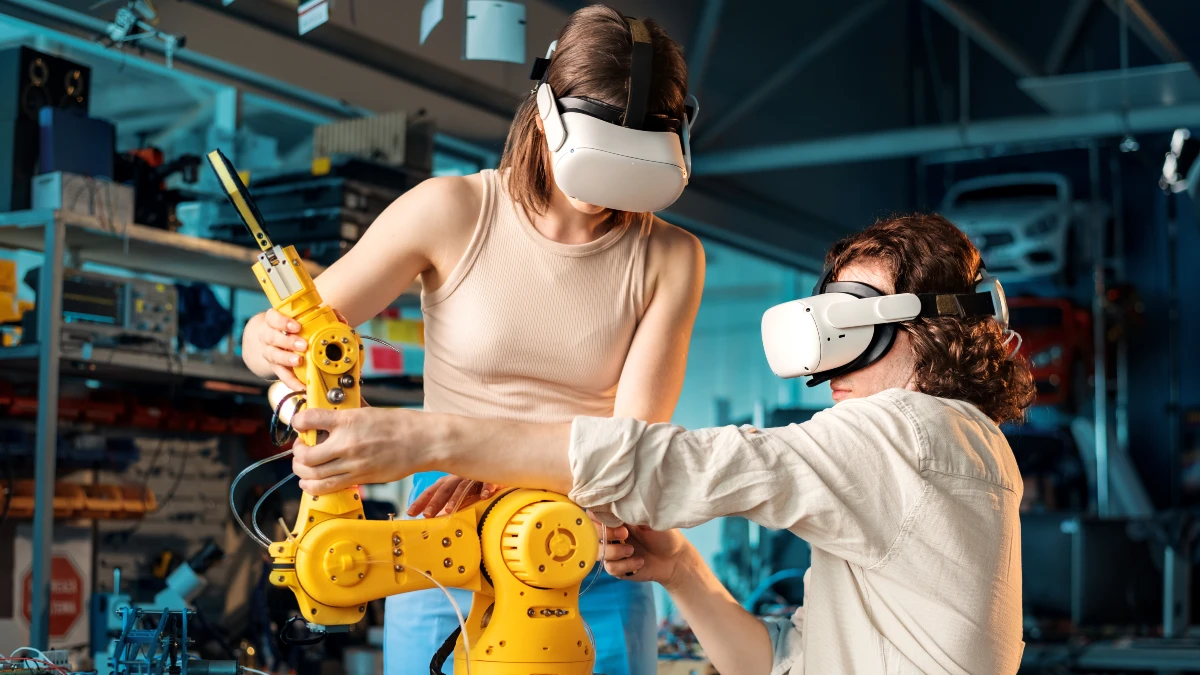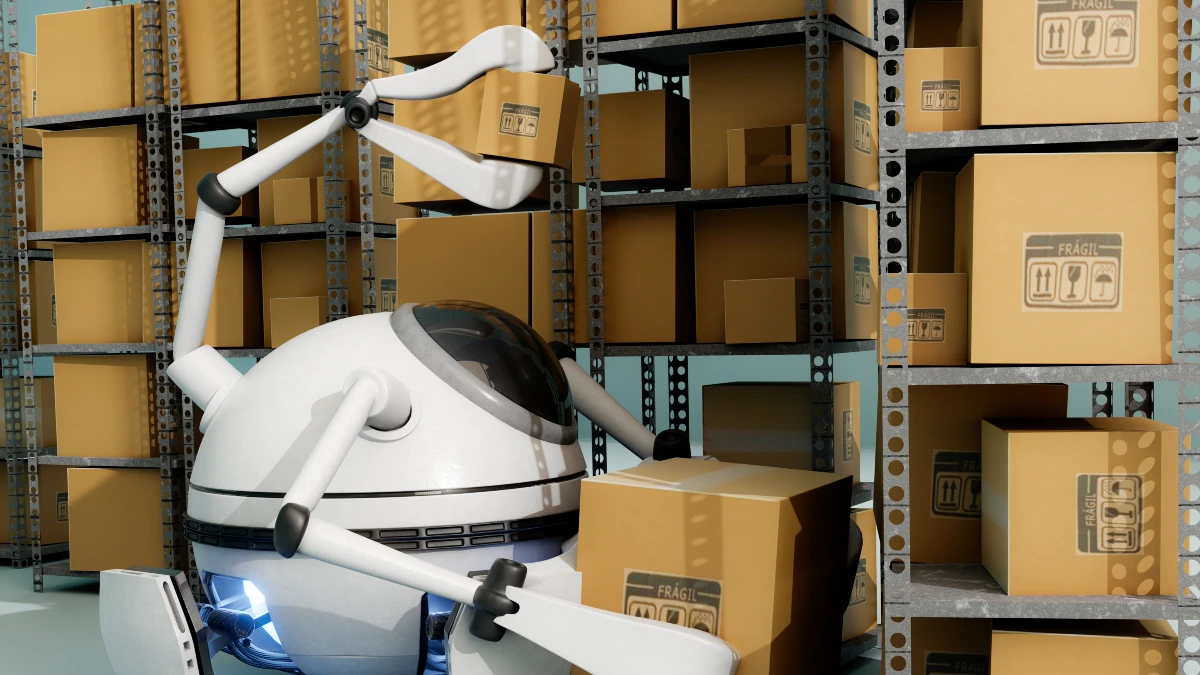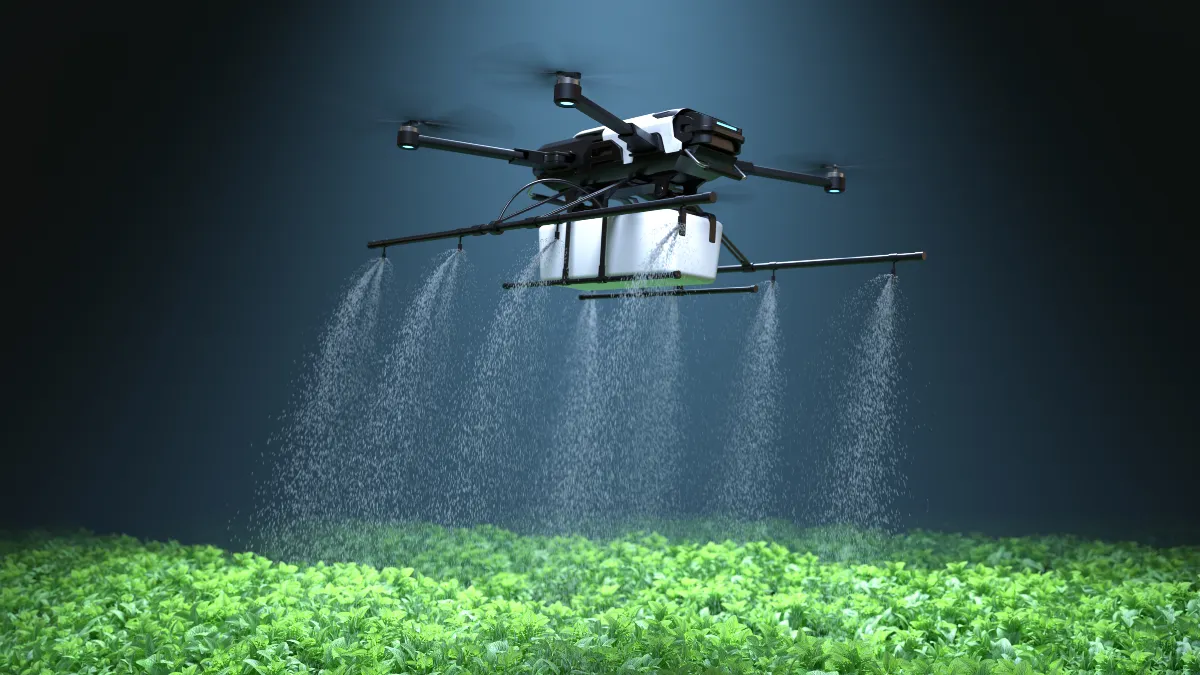Robots just jumped from lab demos to real jobs on factory lines, in ORs, and on farms. But what’s real? This guide cuts the noise, showing ten examples of AI in robotics delivering value now.
The future is already here: in the U.S. alone, da Vinci surgical robots were used in over 2.6 million procedures last year, a 17% increase. This isn’t demo-ware.
You’ll get numbers and links for humanoid pilots, weed-zapping lasers, and 3D-printed houses. We’ll show you how to scope a low-risk trial, so you can act on what’s deployable, not what’s hyped.
1. Figure’s Humanoids Move From Pilots to Real Work (humanoid robots 2025)

Figure builds general-purpose humanoids for factory work now. Its roadmap points to the home. The year 2025 matters due to a shift. The company moved from short trials to daily, in-plant testing. This testing and data collection is with BMW. BMW confirms Figure 02 robots were tested successfully.
Testing occurred in a real production environment at Plant Spartanburg. Teams are now working through results. This supports future applications. That signals progress, not just a marketing video. Funding is real. Figure secured a $675M Series B on February 29, 2024. It also has a collaboration agreement with OpenAI. The funding is backed by Microsoft, NVIDIA, Jeff Bezos, and others.
That is fuel for faster productization and AI training. In 2025, TIME profiled Figure’s push. This push is toward a household-capable “Figure 03.” The profile noted candid limits. It highlighted the reliance on long shifts of data capture.
It also mentioned human-guided training. The article is honest about what works today. It is also honest about what is still hard. Manufacturers can run a POC scoping exercise now. Define one or two ergonomic or low-variance tasks. Examples include fixture loading or tote movement. Set a data capture plan. This includes hours and scenarios.
Align on success metrics. Examples are cycle time window, safety events, and uptime. This keeps you ready for humanoid robots 2025 pilots. It does so without overspending on hardware.
2. Tesla Optimus: Viral Demos, Steady Capability Gains

Tesla’s Optimus Gen-2 is about 10 kg lighter. It has about 30% faster walking than Gen-1. Gen-2 has more dexterous hands than Gen-1. These updates were shown in December 2023. They were widely covered by tech outlets. These are material steps toward useful manipulation. What’s new in 2025: fresh social clips show Optimus practicing martial arts or balance.
Treat these as promising but unproven. Wait until third-party verification confirms autonomy versus teleoperation. Use public demos as a “watch list.” Do not use them as a purchase trigger. Independent context: trackers and reviewers continue to question the autonomy level.
They question how much is autonomous versus teleoperated in many humanoid demos. This is not just a question for Tesla. Pair company posts with independent reporting. Do this before you set expectations. Actionable takeaway: set an internal review gate for late 2025 to 2026. Build an evaluation brief.
Target tasks and success metrics. Examples of metrics are grasp success percentage and mean time between fails. Include safety constraints and integration points. Integration points include fleet management and guarding. Keep conversations warm. Do not plan a factory swap yet.
3. Boston Dynamics’ New Electric Atlas Is Built for Work

Boston Dynamics retired the hydraulic Atlas. It introduced a fully electric Atlas. The new Atlas is designed for real-world applications. That matters for reliability, maintenance, and cleanliness around factory assets. The company shows Atlas handling real parts.
An example is engine covers. It is positioning itself as an R&D-to-production bridge. This is for advanced manufacturing. Hyundai is an early partner environment. Electric actuators and a cleaner design reduce leak and service risks. This is compared to hydraulics.
If you are in automotive or heavy assembly, prepare pilot cells for mobile manipulation now. These cells need safe zones, fixtures, part trays, and test scripts. Test scripts include pick-place sequences and misalignment cases. Define service SLAs and a failure-reporting loop.
4. Agility’s Digit + RoboFab: Humanoids at Production Scale

Agility opened RoboFab in Salem, Oregon. It has capacity to scale to 10,000 robots per year at maturity. The capacity will be hundreds in early years. The Agility Partner Program (APP) received first Digit deliveries in 2024. General availability is in 2025. This is a real production ramp, not a one-off demo. Digit focuses on warehouse tote work.
This includes moving, loading, unloading, and recycling totes. This is boring work, perfect for steady ROI. This works well when reliability is high. Local 2025 coverage highlights how the plant and hiring support scale. If you run DCs/3PLs, pick a single tote flow now.
An example is induction to staging. Map cycle time and failure modes. Failure modes include dropped totes. Map handoffs with conveyors or AMRs. Pilot one or two Digit units. Do this in a fenced or supervised cell. Agility opened RoboFab in Salem, Oregon. It has capacity to scale to 10,000 robots per year at maturity. The capacity will be hundreds in early years.
The Agility Partner Program (APP) received first Digit deliveries in 2024. General availability is in 2025. This is a real production ramp, not a one-off demo. Digit focuses on warehouse tote work. This includes moving, loading, unloading, and recycling totes. This is boring work, perfect for steady ROI. This works well when reliability is high.
Local 2025 coverage highlights how the plant and hiring support scale. If you run DCs/3PLs, pick a single tote flow now. An example is induction to staging. Map cycle time and failure modes. Failure modes include dropped totes. Map handoffs with conveyors or AMRs. Pilot one or two Digit units. Do this in a fenced or supervised cell.
5. NVIDIA’s GR00T + Jetson Thor: The ‘Brain’ for Humanoids

NVIDIA announced Project GR00T. This includes foundation models for embodied AI. They also made a major Isaac platform update. They introduced Jetson Thor edge computers for humanoids. In short: this means faster skill learning. It allows for better sim-to-real transfer. The compute is built for whole-body control.Jetson Thor brings up to 2070 FP4 TFLOPS of power.
It has up to 128 GB memory in a 40–130 W envelope. This offers headroom for vision-language models. It supports planning and high-rate sensing. Specs are public and targeted at “supercomputers for humanoids.” In 2025, NVIDIA released Isaac GR00T N1/N1.5 updates. They also provided developer posts tying synthetic data generation (“GR00T-Dreams”) to skill learning.
This shows that buyers can expect faster capability updates from partners building on Isaac. What you can do now: when you evaluate a humanoid, ask about the following. Ask: Which Isaac/GR00T release is being used? Ask: Which Thor module is included? What sim assets and datasets ship with the robot? This will tell you how quickly new skills can arrive. It will also indicate what on-prem compute you will need.
6. Surgery Gets a Major Upgrade: Intuitive’s da Vinci 5

The da Vinci 5 earned FDA 510(k) clearance. This occurred on March 14, 2024. It adds about 10,000 times more compute. It includes a new Force Feedback capability. In testing, this let surgeons apply up to 43% less force on tissue. This was during simulated tasks.
This is important for gentler handling. Intuitive’s platform page details 150-plus design innovations. It offers better 3D vision. It has workflow tweaks aimed at throughput. If you run surgical service lines, this is less “cool robot.” It is more about OR productivity plus training data for skills improvement.
Hospitals should scope service-line pilots now. Examples include urology, GYN, and general surgery. Align on case mix, console time, complications, and turnover times. Set up surgeon training with Force Feedback instruments. Confirm procurement timing and capital plan.
7. New Surgical Challenger: J&J OTTAVA’s First U.S. Cases (2025)

J&J’s OTTAVA received IDE approval in late 2024. This approval enables U.S. clinical trials. On April 14, 2025, J&J reported first U.S. clinical cases completed. This signals real competitive pressure in multi-port surgical robotics. It also signals new room configurations to consider.
Early trade coverage confirms those initial cases. For hospitals, this means more choice and leverage. This is especially true if room layout, arm geometry, or training integration better fits your workflows. This is leverage over incumbents. Fiercebiotech.com reported this.
Form a small technology assessment group now. Include surgeons, nursing staff, and biomed. Request site visits where trials occur. Build a side-by-side matrix. The matrix should cover instrument set, maintenance, footprint, and data/tele-mentoring.
8. Drone Delivery at Retail Scale: Walmart + Partners

Walmart passed over 150,000 drone deliveries since 2021. It announced 2025 expansions to new states and cities. These expansions are through partners like Wing and Zipline. This is not a lab. It is a retailer using drones at real volumes. Walmart is publishing milestones.
In 2025, Wing and Walmart detailed expansions across multiple states. Coverage lays out markets, service areas, and typical SKU, weight, and SLA details. This is for suburban customers. If you are a retailer or city, start with airspace and ops partners now. Pick two zip codes.
Define service radius, weight limits, and 15–30 minute delivery windows. Use partner fleets first. Do not build your own fleet. Yes, I would be happy to compare the key competitive developments in the surgical robotics and manufacturing humanoid markets based on the information you provided.
9. AI Farming That Vaporizes Weeds: Carbon Robotics LaserWeeder

Carbon Robotics’ LaserWeeder uses AI vision plus high-power lasers. It kills weeds without herbicides. Case studies report lower costs. They report strong weed-kill counts at commercial scale. Western Growers cites “10 billion weeds killed” across farms. Hardware matters.
The latest machines tout up to 600,000 weeds per hour. They use 24 lasers and 24 NVIDIA GPUs. This is serious throughput for specialty crops. Farmers report labor savings and yield protection. This is because you are not spraying crops. Budget either capex or service models now.
Ask your dealer about these models. Train crews on safety perimeters. Pilot on a single block. Log before and after herbicide spend and weed-pressure.
10. Robots Are Printing Buildings: ICON & COBOD (Earth and Moon)

ICON by NASA are funding paths to lunar construction. The project is called Project Olympus. NASA’s 2025 update continues to back testing. Testing is for off-world building. This uses regolith-based materials and large-scale printers. That research also feeds back into Earth projects. Coverage in 2025 shows ICON’s ongoing tests and mission plans.
COBOD advances multi-functional construction printers and robots. These are delivering large projects. New Atlas reports a national program in Qatar. This program is to 3D-print hundreds of schools. This highlights how this scales beyond tiny demo sheds.
Developers and agencies can start with permitting consultations now. Pick simple use-cases. Examples include utility buildings or single-story housing. Pre-qualify mix suppliers. Create a cost model. Include crew size, print hours, cure time, and finishing trades.
